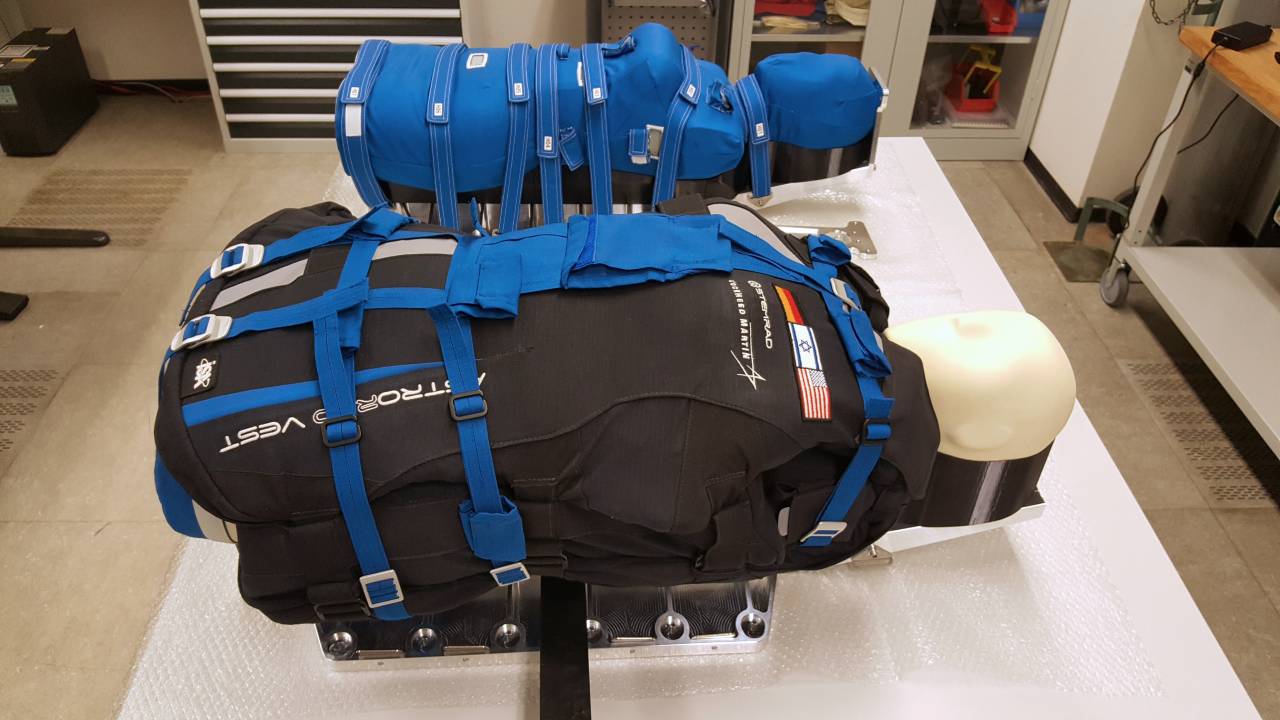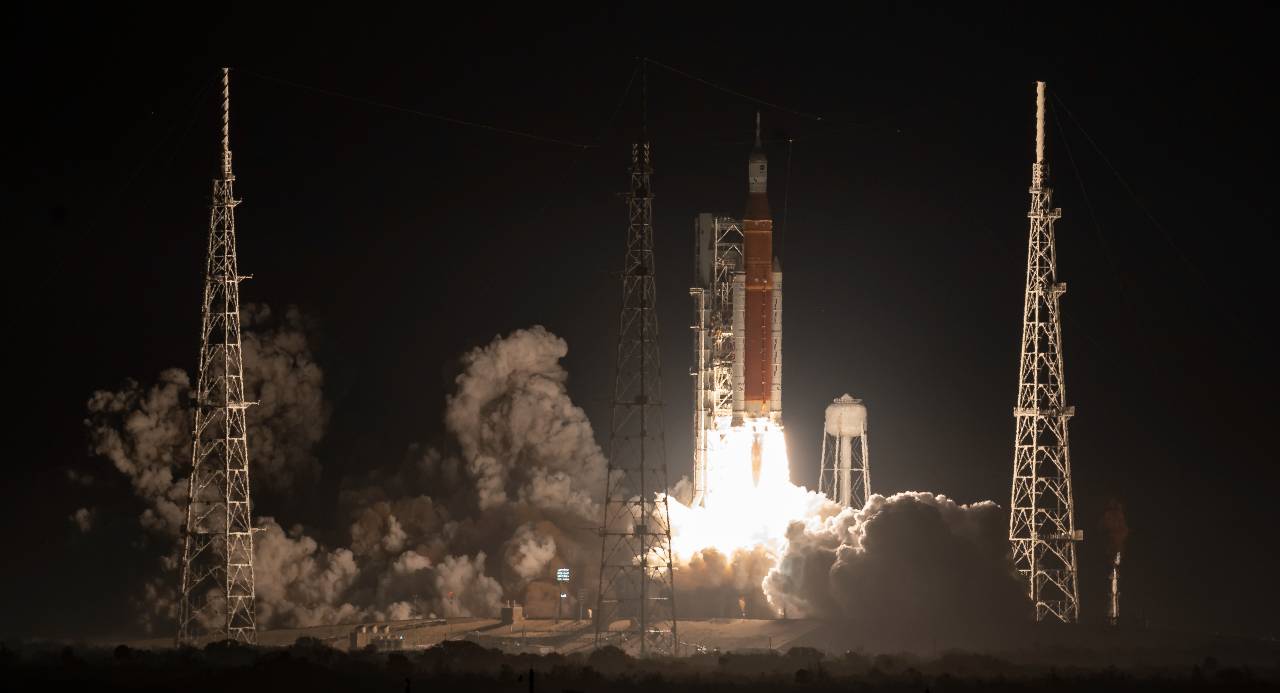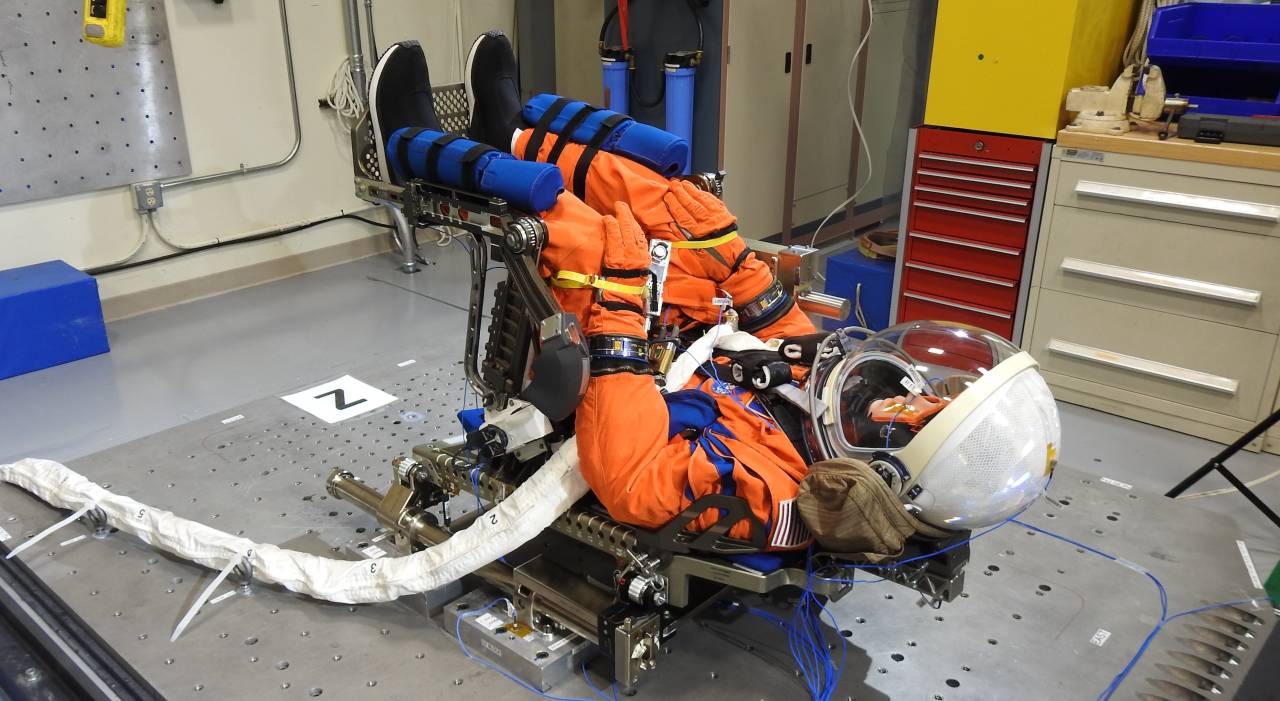
Helga in blue and Zohar, donning the AstroRad vset are the first female mannequins to fly to the Moon. /NASA
Helga in blue and Zohar, donning the AstroRad vset are the first female mannequins to fly to the Moon. /NASA
The launch of NASA's Artemis I mission last week - the first step in ambitious plans for putting humans back on the Moon - has for the first time seen two artificial female bodies sent into lunar orbit, with the express purpose of measuring the effects of space radiation on women's bodies.
The expedition for the women mannequins is part of NASA's grand designs to establish a long-term Moon base that will eventually serve as a space link to Mars. That will include sending women and people of color onto the surface of the Earth's celestial satellite for the first time.
"What an incredible sight to see NASA's Space Launch System rocket and Orion spacecraft launch together for the first time. This uncrewed flight test will push Orion to the limits in the rigors of deep space, helping us prepare for human exploration on the Moon and, ultimately, Mars," said NASA Administrator Bill Nelson.
But one of the biggest challenges for returning to the Moon and deeper space missions in general, no matter the gender and ethnicity of the astronauts, is the unknown impact of long-term space exposure on the human body.

NASA's Space Launch System rocket carrying the Orion spacecraft launches on the Artemis I flight test. /Bill Ingalls/NASA
NASA's Space Launch System rocket carrying the Orion spacecraft launches on the Artemis I flight test. /Bill Ingalls/NASA
First female Moon walk
Up until now, only 12 humans have ever walked on the lunar surface, all during the U.S. Apollo program between 1969 and 1972. All of them were white men. More than that, the longest a human has spent away from Earth, spending the majority of their time inside inside the protective shell of space crafts, is only around 14 months.
Essentially, there is still a lot of information missing on what long-term outer-Earth exposure like Moon walks will do to humans. Therefore the main purpose of the uncrewed Artemis I flight test is to learn how best to protect astronauts ahead of their first crewed mission, Artemis II, set for in 2024.
One of the biggest concerns and points of study for NASA and their European, Canadian, and Japanese partners is space radiation.
With no protection from the Earth's magnetic field, humans in space are at high risk from things like solar energetic particles, protons that are sent out from the sun at incredibly high speeds that can attack human cells and DNA.
One of the knock-on effects for astronauts could be an increased chance of cancer, among other unknown impacts on organs like the heart and brain.
This risks are thought to be higher for women, according to the German Aerospace Center, because female body parts, such as breasts, are more sensitive to such radiation than male body parts.

The commander's seat is occupied by a male mannequin, Commander Moonikin Campos, while Helga and Zohar occupy the lower two seats. /NASA
The commander's seat is occupied by a male mannequin, Commander Moonikin Campos, while Helga and Zohar occupy the lower two seats. /NASA
Helga and Zohar
That's where the two women mannequins, called Helga and Zohar, come in. They are specifically designed to measure radiation risks to women's bodies in space. Helga and Zohar are only made up of a head and torso, but their bodies are modelled on material similar to human organs, bones and soft tissues.
The only difference between the two mannequins is that Zohar will be wearing a radiation protection vest called AstroRad, while Helga will not, so as to test the impact of protective clothing for future astronauts.
Both will be hooked up to multiple sensors that will let scientists measure internal radiation as part of the MATROSHKA AstroRad Radiation Experiment, a colaboration betwen NASA, the Israeli Space Agency, and the German Aerospace Center.
Perhaps unsurprisingly the commander's seat on the Artemis I is occupied by a male mannequin, Commander Moonikin Campos, while Helga and Zohar occupy the lower two seats on Orion.
The male mannequin in the commander seat is equipped with his own radiation sensors and wears a first-generation Orion Crew Survival System suit – a spacesuit astronauts will wear on future human Moon missions.
All three mannequins will allow NASA and its partners to better prepare for the potentially harmful effects of Moon landings all the way to deep space travel.